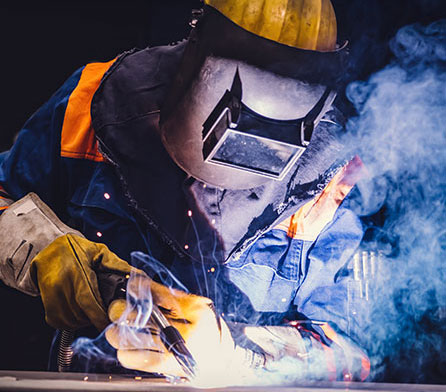StarGold™ O-1 Welding Gas Blend
The best shielding gas blend for welding stainless steel frequently depends upon the desired bead shape, color and chemistry, and on the type of metal transfer used.
Two-part blends, either argon/oxygen or argon/carbon dioxide, provide good performance and reduced shielding gas costs.
Linde’s StarGold O-1 gas blend is primarily used for pulsed and spray metal transfer where a slightly oxidized weld bead surface is acceptable. Oxygen stabilizes the arc and improves metal transfer with out a significant change in bead appearance.
Oxygen blends with greater than 5% oxygen exhibit greater tendency toward undercutting, poor bead shape and difficulty in puddle control. Gap-bridging ability is reduced. Oxide build up on the bead surface may also be excessive, which can be problematic when the weldment is painted.
The StarGold argon/oxygen blends from Linde can be readily supplied as pre-mixed liquid in portable containers for reduced gas supply costs.
Features
Minimum oxidizing potential
Benefits
- Better color match than higher oxygen blends
- Good arc stability in spray and pulsed spray
Typical Applications
Spray welding thick sections of stainless steel
Comparisons
Below are comparisons between shielding gas blends over a range of operating conditions. They are intended to provide suggestions for gas blend selection based on the criteria indicated.

Note: The selection of the appropriate shielding gas can be complex due to the variety of operating variables (base metal chemistry and thickness, transfer type, wire selection and welding position). Consult your Linde representative to help you choose the best gas for your application.
Welding Conditions Selection Table
| Wire Diameter (in) | Process | Wire Feed Speed (ipm) | Current Level (amps) | Voltage (volts)* |
|---|---|---|---|---|
| .035 | Short Circuit Spray Pulsed Spray | 250-290 350-500 275-400 | 130-160 190-240 100-150 | 23-25 26-28 08-20 |
| .045 | Spray Pulsed Spray | 250-300 350-500 | 225-260 175-225 | 28-30 22-25 |
* Voltage level for 60 Hz power supply. Add 2-3 volts for 50 Hz models.




























